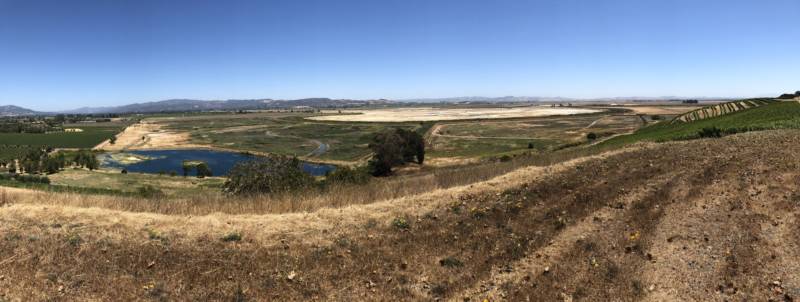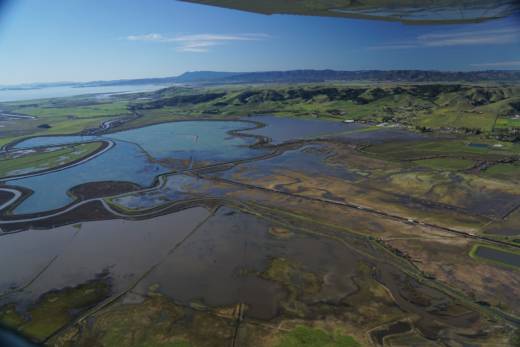This is part of our ongoing series about where taxpayer funds from 2016’s Measure AA to restore the San Francisco Bay are going. Find all the stories here.
The San Pablo Bay comprises the north end of the larger San Francisco Bay and its shores reach three North Bay counties.
From the top of a hill near the Sonoma Raceway and overlooking Sonoma Creek, you can get a good look at this vast body of water and what’s left of its surrounding wetlands. Julian Meisler, with the Sonoma Land Trust, says this area used to be an expanse of tidal wetlands.
“If you came here 150 years ago this would have been tidal marsh and open water,” says Meisler. “You might have seen bears, eagles, salmon and steelhead swimming up Sonoma Creek.”
But all that changed in the mid 1800s when farmers and landowners built levees, drained the marshes and generally cut off the North Bay’s streams from the San Pablo Bay. Because of that, the land here subsided, or dropped, by more than six feet below sea level, says Meisler. That drop has resulted in chronic flooding, even from minor storms. According to a report from the Sonoma Land Trust, landowners and wildlife agencies in this area now rely on pumps to prevent flooding almost every day.

The $150,000 granted from Measure AA, will address this constant flooding by helping develop a plan for something called landscape or large-scale restoration. This kind of restoration considers how several parcels of land might affect each other and the best way for each parcel’s restoration efforts to work in unison.

